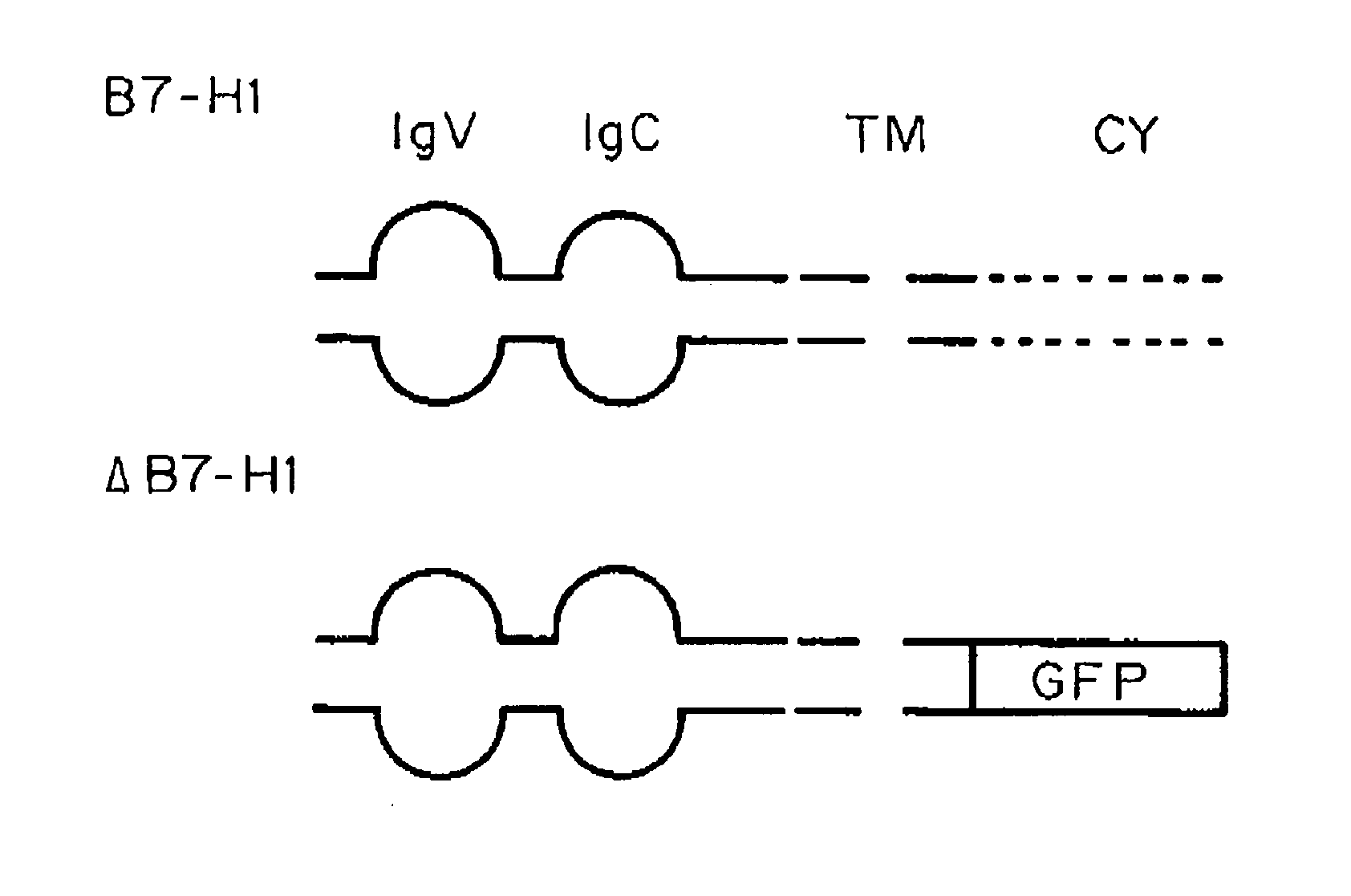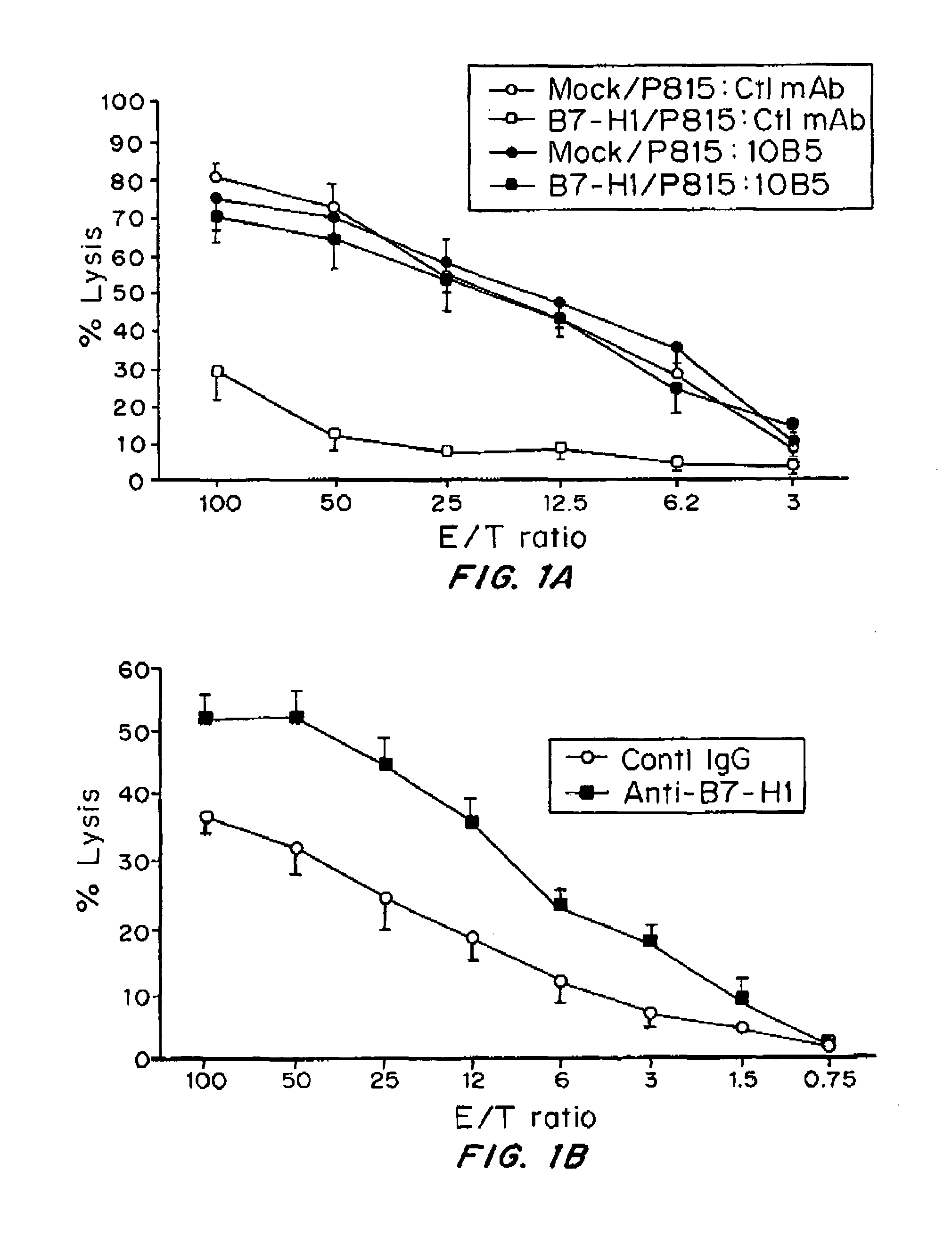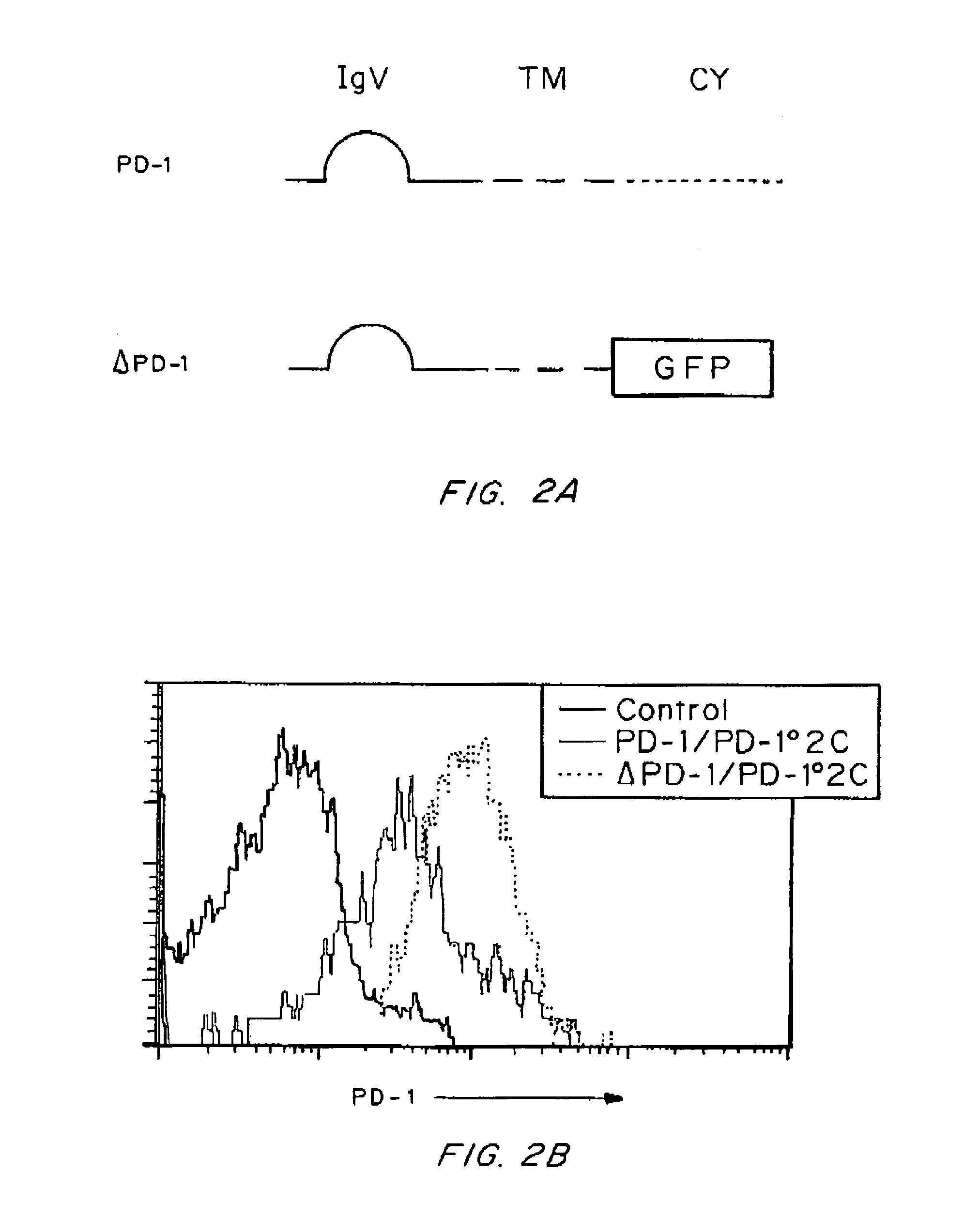B7-H1 (CD274) Antagonists Induce Apoptosis of Tumor Cells
a tumor cell and apoptosis technology, applied in the field of b7h1, can solve the problems of adverse side effects, and achieve the effects of restoring the killing of cancer cells, increasing the resistance of cancer cells, and inhibiting, reducing, or blocking b7-h1 mediated signal transduction
- Summary
- Abstract
- Description
- Claims
- Application Information
AI Technical Summary
Benefits of technology
Problems solved by technology
Method used
Image
Examples
example 1
Expression of B7-H1 Confers Resistance of Tumor Cells to Specific CTL-Mediated Lysis
Mice and Tumor Lines
[0129]Female DBA / 2, C57BL / 6 (B6) mice were purchased from the National Cancer Institute (Frederick, Md.). Age-matched mice, 6 to 10 weeks old, were used for all experiments. 2C transgenic mice (a gift from Dr. Larry Pease, Mayo Clinic, Rochester, Minn.) and PD-1 deficient mice in B6 background (a gift from Dr. Tasuko Honjo, Kyoto University, Kyoto, Japan) were described previously16. The 2C×PD-1KO mice were obtained by backcrossing between 2C transgenic mice and PD-1KO mice. All mice were maintained in the Animal Facility at Johns Hopkins Hospital under approved protocol by the Institutional Animal Care and Use Committee. P815 mastocytoma cells were purchased from the American Type Culture Collection (Rockville, Md.). A subclone, which does not express B7-H1, even in the presence of IFN-gamma or activated T cells, was selected before transfection. Stable transfectants of P815 line...
example 2
PD-1 Signaling is not Required for Molecular Shielding of Tumor Cells from T Cell Killing
[0135]A previous study showed that interaction between B7-H1 and PD-1 is required for the formation of a molecular shield (Hirano, F., et al. Cancer Res., 65:1089-1096 (2005)). It is widely accepted that signaling from B7-H1 to PD-1 on T cells delivers a negative signal to suppress T cell responses (Freeman, G. J., et al. J Exp Med., 192:1027-1034 (2000)). Therefore, one possible explanation for molecular shield is tumor-associated B7-H1 signaling through PD-1 into T cells, leading to transient loss of T cell cytolytic activity. To test this possibility, a truncated PD-1 was prepared as described in Example 1, in which the intracellular domain of PD-1 was replaced by green fluorescence protein (GFP) gene (FIG. 2A) to eliminate its intracellular signaling. This truncated PD-1 (ΔPD-1) as well as wild type PD-1 (PD-1) was inserted into lentiviral vectors for efficient T cell transduction. To elimin...
example 3
Intracellular Domain of B7-H1 is Required for Molecular Shielding
Monoclonal Antibodies, Fusion Proteins and Flow Cytometry Analysis
[0136]Purified mAb against mouse H-2Dd and CD95 (clone Jo2) was purchased from PharMingen (San Diego, Calif.) and H-2Ld from BioLegend (San Diego, Calif.). Rat mAb (clone TY25) against B7-DC, FITC- or phycoerythrin-conjugated goat anti-mouse antibodies and FITC-conjugated goat anti-hamster antibodies were purchased from eBioseience (San Diego, Calif.). An Armenian hamster mAb (clone 10135) against mouse B7-H1 (Hirano, F. et al., Cancer Res., 65:1089-1096 (2005)), a hamster mAb (clone G4) against mouse PD-1 (Hirano, F. et al., Cancer Res., 65:1089-1096 (2005)), a rat mAb (clone 2A) against mouse CD137 (Wilcox, R. A., et al., J Clin Invest., 109:651-659 (2002)), mouse PD-1Ig fusion protein (Hirano, F. et al., Cancer Res., 65:1089-1096 (2005)) and mouse B7-H1Ig fusion protein (Hirano, F. et al., Cancer Res., 65:1089-1096 (2005)) were all described previousl...
PUM
| Property | Measurement | Unit |
|---|---|---|
| molecular weight | aaaaa | aaaaa |
| soluble | aaaaa | aaaaa |
| surface molecular signatures | aaaaa | aaaaa |
Abstract
Description
Claims
Application Information
 Login to View More
Login to View More - R&D
- Intellectual Property
- Life Sciences
- Materials
- Tech Scout
- Unparalleled Data Quality
- Higher Quality Content
- 60% Fewer Hallucinations
Browse by: Latest US Patents, China's latest patents, Technical Efficacy Thesaurus, Application Domain, Technology Topic, Popular Technical Reports.
© 2025 PatSnap. All rights reserved.Legal|Privacy policy|Modern Slavery Act Transparency Statement|Sitemap|About US| Contact US: help@patsnap.com



